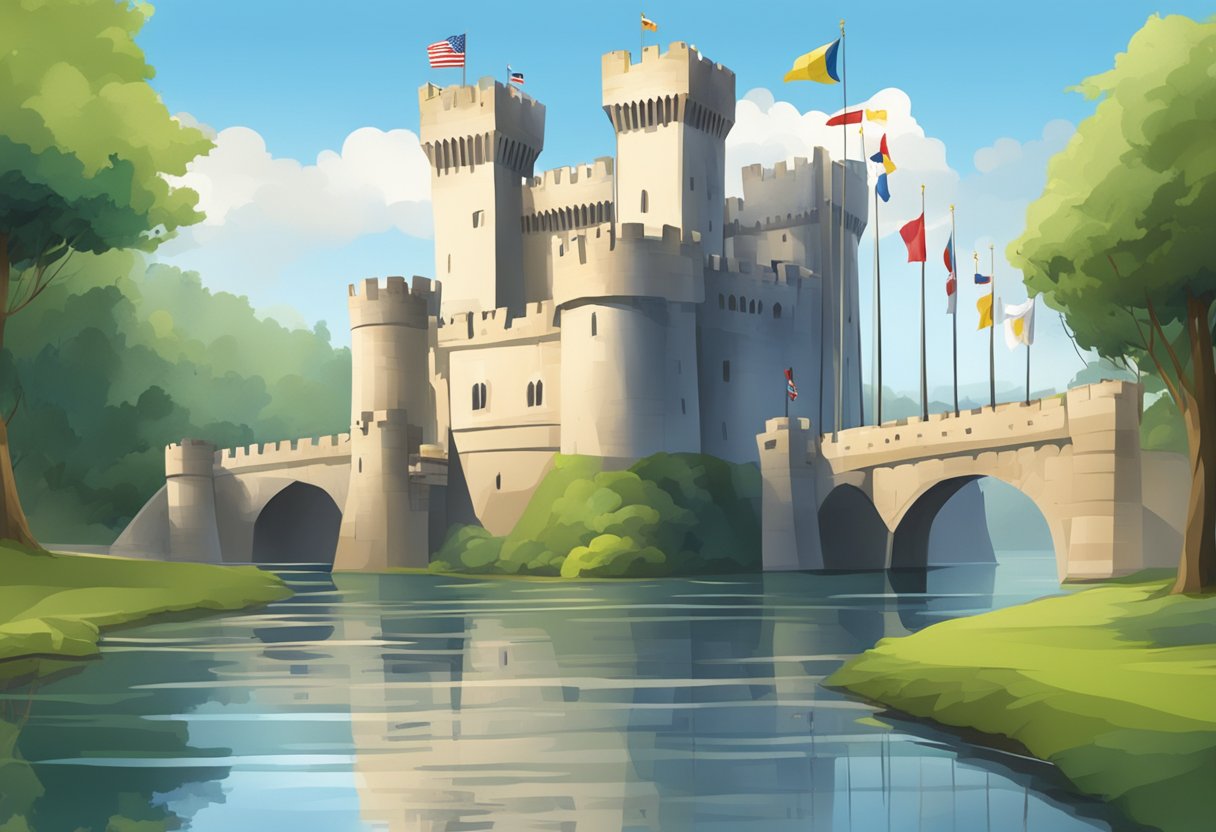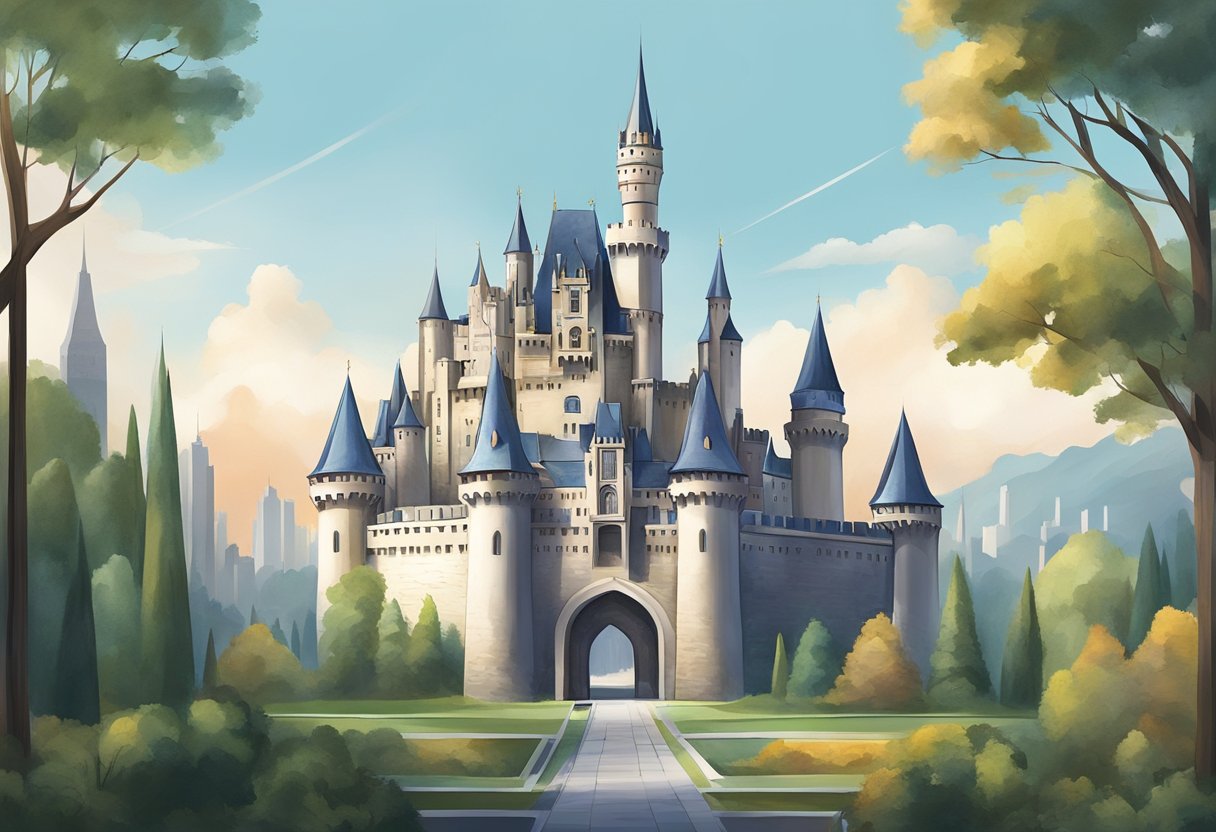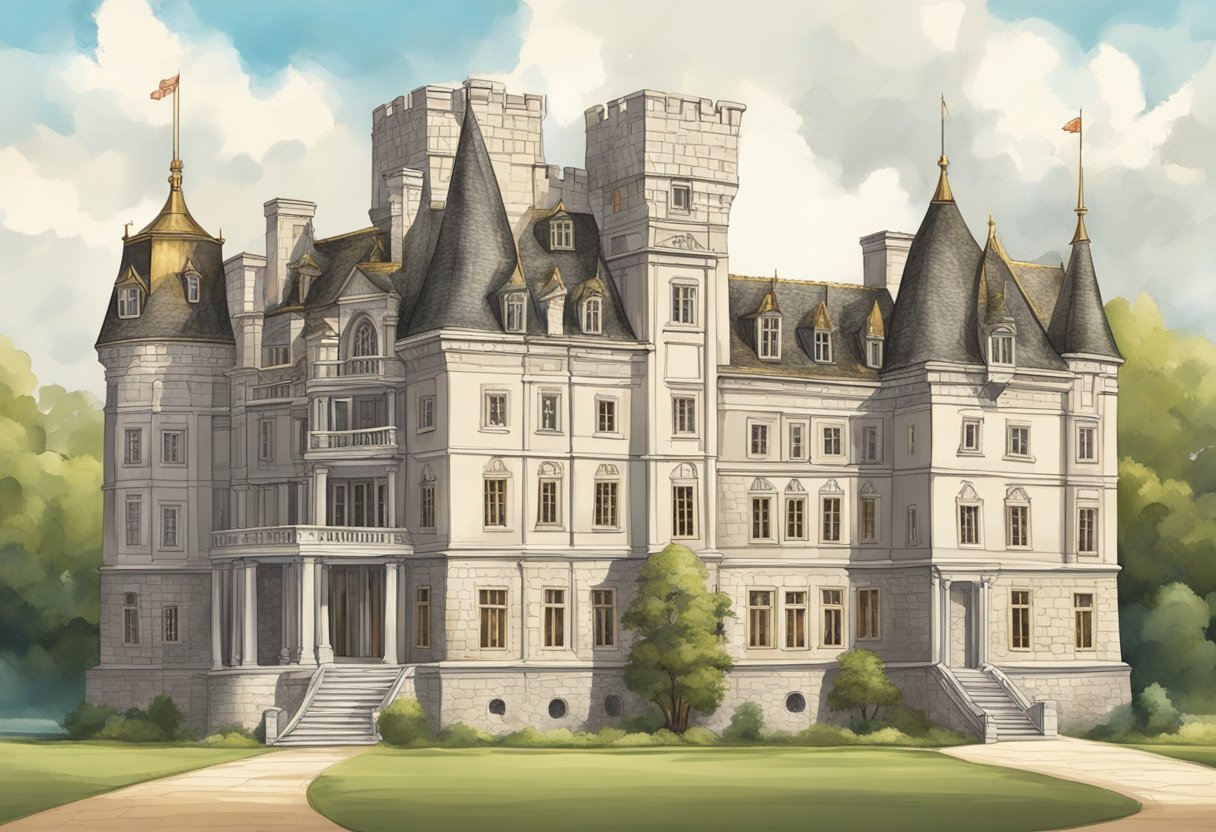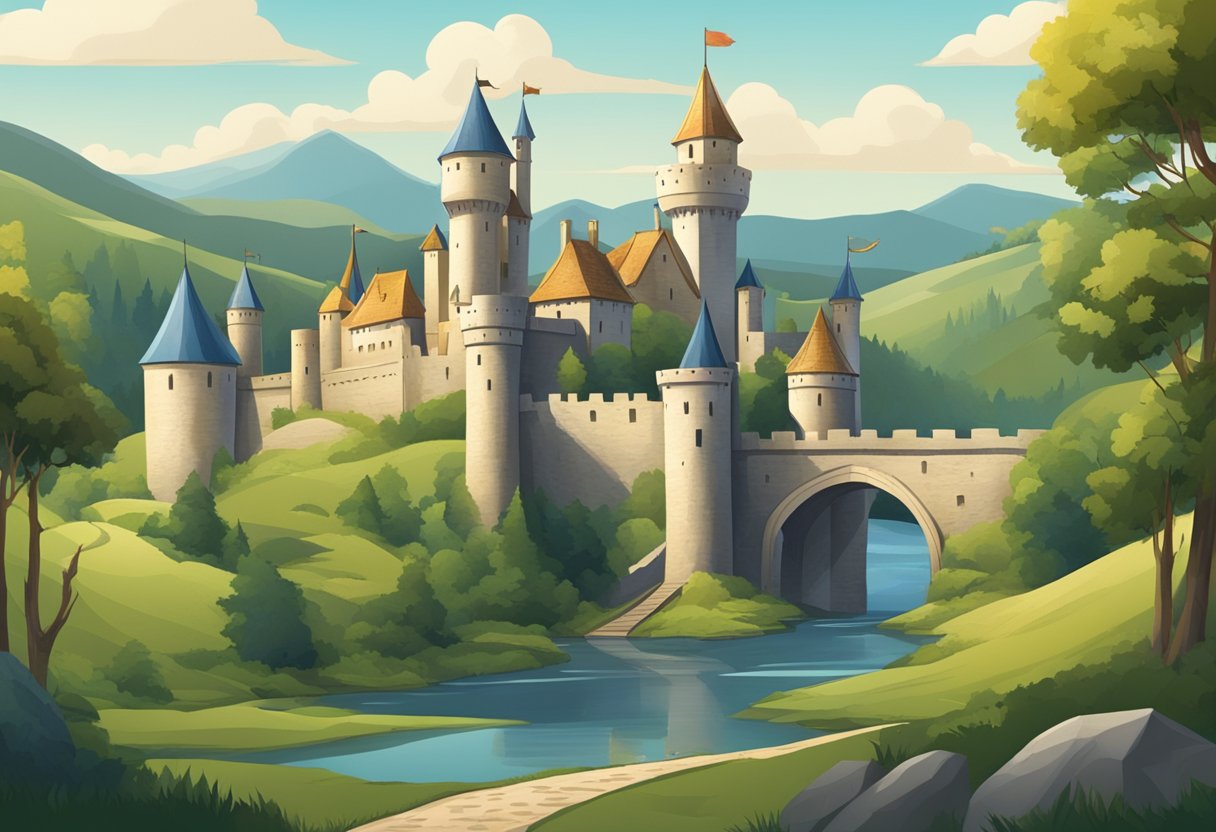Castles conjure up images of medieval knights, fair maidens, and battles fought with swords and shields. While this romanticized vision belongs to bygone eras, the question of a castle’s role in contemporary society is a curious one. One might assume that these stone fortresses have outlived their utility, relegated to the pages of history or the fantasized realms of storybooks and films. However, castles have not merely faded into the backdrop; they continue to find their place in the modern world.

From stately homes and tourist attractions to venues for events and even private residences, castles have adapted to the present day. Some have been transformed into luxurious hotels where guests can sleep in rooms fit for a king or queen, while others stand as museums, holding within their walls centuries of history and culture. In places where history is deeply cherished, castles are often preserved as national monuments, their battlements and towers symbolizing a rich heritage that continues to captivate people’s imaginations.
Key Takeaways
- Castles have transitioned from medieval strongholds to multifaceted modern assets.
- They serve as cultural and historical repositories, preserving legacies of the past.
- Despite military evolution rendering them obsolete for defense, castles remain iconic in popular culture.
Castles in the Modern World

Who says old stones don’t get to have new lives? Castles have wiggled their turrets into the 21st century, not just as dusty relics, but with a range of roles that keep their moats-worthy grandeur very much in the now.
Current Uses of Castles
In modern times, castles aren’t just for the sword-swinging and damsel-saving crowd! They’ve been known to trade their dungeons for something a tad more hospitable. Here’s how:
- Museum Marvels: Many a castle has flung open its heavy oak doors as museum spaces, allowing the history buffs to roam their historic halls.
- Eventful Estates: Weddings, banquets, and even the odd conference turn castles into buzzing social hubs.
For instance, some have said that Edinburgh Castle, sitting on its very own volcanic rock (as one does), is still a mighty fortress of activity, often jam-packed with tourists.
Preservation and Tourism
The ‘Keep Out’ signs have long gone rusty. Castles today plead, “Trample our gardens, gasp at our tapestries and do take the guided tour!”
- Picture-Perfect Gardens: Manicured lawns and flowerbeds meticulously cared for, just to win the approval of visitors’ Instagram feeds.
- Tourist Hotspots: They charm visitors from around the globe, capitalizing on their ancient charm to fill the present-day coffers.
A fine example is that Bamburgh Castle remains a picturesque marvel, no Instagram filter needed.
Private Ownership and Habitation
Some castles ditched the public eye for a cozier domestic affair. These lucky lumps of stone have become the ultimate fixer-uppers.
- Plush Pads: Castles have been turned into exclusive private residences. Who wouldn’t want a drawbridge of their very own?
- Hospitality Havens: Others have been converted into hotels, where guests can snooze in a four-poster bed, dreaming of past glories.
A quick peek and you’ll see that around the globe, high walls and deep moats now embrace the quiet life, with some castles having the audacity to be as comfortable as any country house, mansion, or villa.
Historical Significance and Legacy

Castles have long enchanted people with their grandeur, evoking tales of knights, nobles, and festivities. But their significance stretches far beyond the storybook images—these structures stand as enduring physical narratives of the past.
Castles as Historical Monuments
Medieval castles are enduring icons of the Middle Ages, testament to the Norman Conquest and the power struggles that sculpted Europe’s landscape. Consider Scotland, where castles like Dunrobin Castle demonstrate the lasting impact of Scottish history and architecture. Born from the early Middle Ages, many such castles still command the countryside, serving as:
- Tangible connections to the royal family and nobility.
- Monuments marking the Roman walls and Norman invasion.
- Testimonies of the English Civil War‘s intrepid tales.
Scotland’s stone sentinels aren’t just relics; they’re history chapters in moss and stone.
Educational Value and Cultural Impact
Any schoolteacher will tell you, castles aren’t mere ruins to plunder for coins and arrowheads; they’re colossal classrooms. The walls of these fortresses hold lessons on topics from the Norman conquest—thanks William the Conqueror—to the high-stakes drama of royalty and their domestic disputes. Castles illuminate the societal roles and living conditions of those within:
- Castles in medieval society: From defensive bastions to seats of governance.
- Scottish history and the heritage it passes on: Every turret and tower has a tale, often involving an angry Scot and a confused Englishman.
- The transition from wood to stone: Because when it comes to keeping out arrow-flinging visitors, timber simply wouldn’t do.
Bold and broad-standing, these structures bring history to life. So next time someone says, “Let’s hit the books,” perhaps suggest a castle tour—because really, those are just stone books. Big, habitable books you can walk through. And occasionally, they let you wear a helmet.
Military Evolution and Castles
https://www.youtube.com/watch?v=xMizFQljO2E&embed=true
In the grand tapestry of military history, castles have zigzagged from pinnacle strongholds to charming relics, all thanks to the relentless march of military evolution.
From Strongholds to Obsolescence
Castles, those indomitable icons of medieval might, once stood as the front line of military defense. They were the armored superheroes of their day, complete with defensive features to make any attacker think twice.
- Norman Conquest: Castles emerged as fortresses of protection with towering might following the Norman Conquest. Their very presence in a landscape could make an invading force say, “Maybe not today.”
- Curtain Walls: These were not your average living room drapes, but rather thick, towering walls that surrounded the castle, occasionally whispering “keep out” to would-be attackers.
- Moats: Not just for serene swan boats, these water rings were like the castle’s personal space bubbles, deterring uninvited guests from a dampened party entry.
Castles evolved, but so did warfare. With the advent of gunpowder and cannons, the once strong fortresses began to crumble—sometimes literally—under the pressure of advanced artillery. They went from A-list military assets to “Thanks for your service” as new warfare technologies emerged.
Architectural Evolution
The architectural growth of castles remained impressive, as if they were continuously beefing up at the gym to fend off the enemies of their age.
- Inner Ward and Donjon: The core of the castle where the high-value folks would hang out, perhaps discussing the latest siege tactics over a cup of mead.
- Round Towers: These curvy delights offered better deflection of attacks and no blind spots, making life for invaders properly inconvenient.
- D-Shaped Towers: Even better than the round ones, these towers, with their flat sides facing inwards, were like the castle saying, “I can both lift and do cardio.”
- Crenellations: Not just decorative, these were the medieval version of an office cubicle for archers and crossbow aficionados.
The transition from the straightforward cut-and-thrust of sword combat to complex artillery games meant adjustments in castle design. Projecting towers poked out like elbows, allowing defenders to have a broader field of fire, and battlements became more sophisticated to give defenders an edge—quite literally.
Despite their impressive adaptations, the march of military technology did not cease. Cannonballs laughed in the face of castle walls, which were simply not amused. Slowly, inevitably, the military stars faded for castles, and as the smoke cleared, it was evident that their role had shifted from mighty guardians to monumental museums of legacy and lore.
Castles in Popular Culture

Castles have leaped from history books to the silver screen with a dramatic flair that might have medieval knights clanking their goblets in approval. They are the quintessential backdrop for tales of chivalry and damsels in distress, often depicted with towering spires and deep moats. Let’s not forget the frequent cameo of a dragon or two.
Movies and Television: All hail the tales of yore that castles bring to life! From gallant knights to cunning royalty, castles provide the perfect setting for films and TV shows that tap into our love for medieval drama and renaissance intrigue. The awe-inspiring structures take center screen in Hollywood hits, where they’re often depicted with enough flags flapping on the turrets to compete with a used car sales lot.
Poster-worthy Fame: Nothing says “epic” like a castle under siege on a movie poster. It promises viewers a grand adventure without saying a word. Next time you’re at the cinema, count the posters — if there’s no castle, is it even an adventure?
Sleeping Beauty’s Home: Do castles and fairytale princesses go hand in hand, or should we say turret to tiara? Sleeping Beauty, amongst others, could attest to the real estate value of a good castle. After all, where else would you stage a 100-year nap undisturbed?
Castles aren’t just piles of historical stones; they’ve become a beloved trope in entertainment, especially where one simply can’t do without pomp and historical flair. Castles are so ingrained in the fantasy genre that omitting them might be considered a knightly faux pas, instantly subjecting the creator to the stockades of fan criticism. Whether in parodies, animations, or the grandest of epic films, they continue to enchant audiences and will likely do so for eons to come.


Leave a Reply